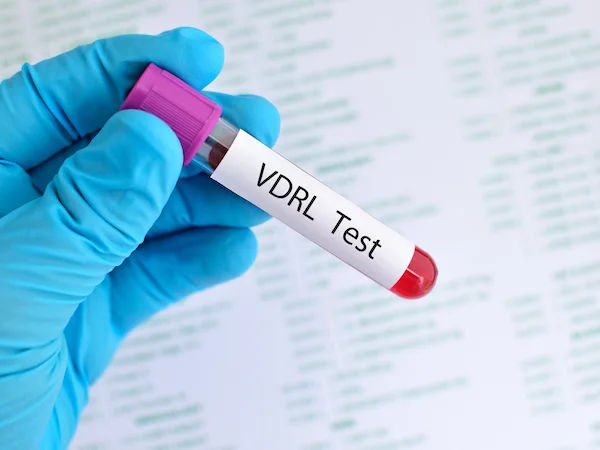Types of Mammography Explained
Know about the mammography, how is it done, preparation, types and does it hurt more.

Written by Dr. Mohammed Kamran
Reviewed by Dr. Shaik Abdul Kalam MD (Physician)
Last updated on 19th Aug, 2025

Introduction
Mammography is a crucial screening tool for breast health, helping detect breast cancer early when treatment is most effective. If you’ve been advised to get a mammogram or are curious about the different types, this guide will help you understand your options in simple terms.
What is Mammography?
A mammogram is a low-dose X-ray of the breast used to detect abnormalities, including lumps or tumors, even before they can be felt. Early detection through mammography can save lives by identifying breast cancer at a treatable stage.
Consult Top oncologist for Personalised Advice
Types of Mammography
There are different types of mammograms, each serving a specific purpose. Let’s explore them:
1. Screening Mammogram
Purpose: Routine check-up for women with no breast symptoms.
How it works: Takes X-ray images (usually two per breast) to look for early signs of cancer.
Who should get it?
Women aged 40+ (as per guidelines from health organizations).
Those with a family history of breast cancer may need earlier screening.
Frequency: Typically once a year or every two years, depending on risk factors.
2. Diagnostic Mammogram
Purpose: Used when a woman has symptoms (like a lump, pain, or nipple discharge) or if a screening mammogram shows something unusual.
How it works: Takes more detailed images from different angles to closely examine suspicious areas.
Who needs it?
Women with breast changes or abnormal screening results.
Those with a history of breast cancer.
3. Digital Mammography (2D Mammogram)
How it works: Uses digital detectors (instead of film) to capture and store breast images on a computer.
Benefits:
Clearer images, especially for women with dense breasts.
Easier to share with doctors electronically.
Who is it best for?
Women of all ages, but particularly helpful for those with dense breast tissue.
4. 3D Mammography (Tomosynthesis)
How it works: Takes multiple X-ray images from different angles to create a 3D view of the breast.
Benefits:
Reduces false alarms by providing clearer images.
Better at detecting cancers in dense breasts.
Who should consider it?
Women with dense breast tissue.
Those at higher risk of breast cancer.
5. Contrast-Enhanced Mammography (CEM)
How it works: Uses a contrast dye to highlight blood flow in the breast, helping detect tumors.
Benefits:
More detailed than standard mammograms.
Useful when MRI isn’t an option.
Who may need it?
Women with suspicious findings on a regular mammogram.
Those who cannot undergo an MRI.
Which Mammogram is Right for You?
Your doctor will recommend the best type based on:
Age & risk factors (family history, genetics).
Breast density (some women have denser tissue, making tumors harder to spot).
Symptoms (if you have pain, lumps, or nipple changes).
Preparing for a Mammogram
Avoid deodorants or lotions on the day of the test (they can interfere with images).
Wear a two-piece outfit for easy access.
Schedule after your period (breasts are less tender).
Does a Mammogram Hurt?
Some women feel slight discomfort due to breast compression, but it lasts only a few seconds. If you’re worried, talk to your technician—they can adjust pressure to make it more comfortable.
When to See a Doctor?
Consult a doctor if you notice:
A new lump in the breast or armpit.
Changes in breast shape or size.
Nipple discharge (other than breast milk).
Persistent breast pain.
Final Thoughts
Mammograms are a vital tool in breast cancer detection. Knowing the different types can help you make informed decisions about your health. If you have any concerns, don’t hesitate to speak with your doctor as early detection saves lives!
Consult Top oncologist for Personalised Advice
Consult Top oncologist for Personalised Advice

Dr. Rupam Manna
Radiation Specialist Oncologist
4 Years • MBBS MD(RADIO THERAPY)
Barasat
Diab-Eat-Ease, Barasat

Dr. Gopal Kumar
Head, Neck and Thyroid Cancer Surgeon
15 Years • MBBS, MS , FARHNS ( Seoul, South Korea ), FGOLF ( MSKCC, New York )
Delhi
Apollo Hospitals Indraprastha, Delhi
(25+ Patients)

Dr Gowshikk Rajkumar
Oncologist
10 Years • MBBS, DMRT, DNB in Radiation oncology
Bengaluru
Apollo Clinic, JP nagar, Bengaluru

Dr.sanchayan Mandal
Oncologist
17 Years • MBBS, DrNB( MEDICAL ONCOLOGY), DNB (RADIOTHERAPY),ECMO. PDCR. ASCO
Kolkata
Dr. Sanchayan Mandal Oncology Clinic, Kolkata
Dr. B Shravanthi Reddy
Radiation Specialist Oncologist
8 Years • MBBS, DNB(Radiation Oncology)
Manikonda Jagir
Apollo Clinic, Manikonda, Manikonda Jagir




